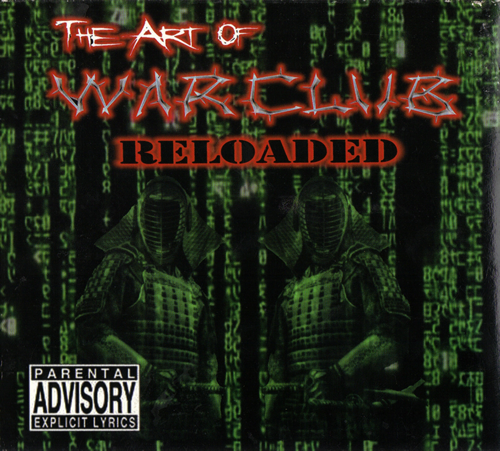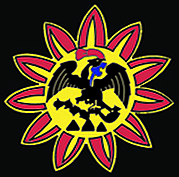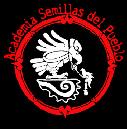The Sandinista Uprising
1926, Jan. 14 > May 2
When a Liberal insurrection was started by GEN. AUGUSTO CÉSAR SANDINO (1895-1934), the U.S. government hastily landed forces. Dedicated to freeing the country of foreign domination and improving the lot of Nicaraguan peasants, Sandino would fight a war against U.S. Marines and the National Guard for the next eight years. A brief armistice was effected by the U.S. (Sept. 23); Chamorro then resigned.
1928, Nov. 4
José Moncada (Liberal) was elected, with the U.S. government supervising the polling. Sandino, who had continued the fighting on his own account and who had gone so far as to attack American troops, withdrew to Mexico, but in 1931 he resumed the struggle.
1933, Jan. 1
With the Sandino forces numbering over 3,000, the U.S. Marines gave up the fight in Nicaragua. In keeping with the turn toward a less interventionist policy, initiated by Herbert Hoover and made official by Franklin Roosevelt, the U.S. created a National Guard, staffed and directed by Nicaraguans. U.S.-educated GEN. ANASTASIO SOMOZA GARCÍA (1896-1956) was appointed head of the guard, which was conceived as a peacekeeping force that would remain politically neutral.
1934, Feb 21
During a U.S.-mediated negotiation between the government and Sandino, Somoza ordered Sandino's execution. In the following weeks scores of Sandino's followers were rounded up and executed, crushing the movement.
1961
Carlos Fonseca, Silvio Mayorga, and Tomás Borge founded the FRENTE SANDINISTA DE LIBERACIÓN NACIONAL (FSLN), composed largely of students, which sought to overthrow the Somozas through guerrilla warfare. The Sandinistas were almost wiped out by the late 1960s.
1974, Dec. 27
During a Christmas party held to honor the U.S. ambassador, FSLN guerrillas stormed in and took 40 hostages, including high-ranking officials. The raid brought worldwide recognition to the FSLN. Somoza announced a state of siege, leading to brutal repression in rural areas.
1976, Nov
FSLN founder and leading ideologue Carlos Fonseca was ambushed and killed.
1978, Jan. 10
PEDRO JOAQUÍN CHAMORRO WAS ASSASSINATED, allegedly by Somoza gunmen. The murder touched off demonstrations, strikes, and widespread violence. It moved many middle-class and elite groups to join the movement to end the dictatorship. The Catholic Church also withdrew its support of the government. The FSLN, meanwhile, had moderated its platform and was seeking to ally itself with all opponents of the Somoza regime.
1978, Jan. 10 > Feb
Indians in Monimbo, Masaya, rose up in support of the FSLN but were bombed into submission.
1978, Jan. 10 > Aug. 22
An FSLN unit stormed the National Palace during a session of Congress, taking over 2,000 prisoners and demanding the release of political prisoners and publication of their agenda. Numerous Latin American countries, including Costa Rica, Panama, Venezuela, and Cuba, had extended offers of both material aid and safe haven to the FSLN.
1978, Jan. 10 > Sept. 8
The FSLN launched insurrections in five cities, but was defeated by National Guard assaults preceded by extremely heavy bombing of urban areas. In the “cleanup” operation, government forces killed over 5,000 persons. In the aftermath the FSLN grew radically, as grassroots groups emerged to oppose Somoza. In the U.S., the Carter administration announced an arms freeze against Nicaragua.
1979, June
As Somoza bombed several major cities, Sandinista forces called for a general strike and final offensive to overthrow the dictator. A broad insurrection, including all classes of Nicaraguans, rallied behind the Sandinista forces to overthrow Somoza.
1979, June > June 8
The FSLN launched an attack on Managua, whereupon Somoza used National Guard planes to bomb the capital. The capital was completely encircled within a month. During this time U.S. secretary of state Cyrus Vance proposed that an OAS peacekeeping force be sent to Nicaragua, but he was rebuffed by all sides.
1979, July
The FSLN came to power in Nicaragua after years of Cuban assistance. The Cuban government immediately pledged aid to the regime. By June 1982 there were over 2,000 Cuban military advisers in Nicaragua.
1979, June > July 18
The new ruling junta, composed of three Sandinistas but including moderates Alfonso Robelo and Violeta Chamorro, entered Managua in triumph. The toll of the war was an estimated 50,000 dead, over $1.3 billion in damages, and a foreign debt totaling $1.6 billion. The five-member junta, along with a legislative and consultative assembly, was responsible to the nine-member FSLN directorate.
1979-84
Led by FSLN leader DANIEL ORTEGA SAAVEDRA (b. 1945), the government engaged in a series of important economic and social reforms. During the fall of 1979, Sandinista Defense Committees tackled the damage done by nearly a decade of war and the 1972 earthquake. In 1980-81, a literacy crusade swept through the countryside, doubling the literacy rate. The Sandinistas nationalized the Somoza holdings, creating state enterprises and a land base for agrarian reform, which eventually placed one-third of the arable land in the public sector. Many large landowners remained but faced new labor and commercial regulations. The Luisa Amanda Espinosa Association of Nicaraguan Women (AMNLAE), an FSLN affiliate, also pushed through numerous initiatives for women. The government introduced social welfare programs, bringing medical care to almost 80 percent of the population. The FSLN sought to consolidate its hold on the state, putting the military under Sandinista control and centralizing authority in the FSLN Directorate.
1980
Angry over Sandinista power in the government, moderates Alfonso Robelo and Violeta Chamorro resigned from the five-person Governing Junta of National Reconstruction.
1984, March 13 > Nov
Under pressure from the international community, the government held elections for a president, vice president, and a 90-member National Assembly. Although the elections were boycotted by certain right-wing groups, seven parties won representation in the election. Eighty-four percent of eligible voters cast ballots, awarding the FSLN 67 percent of the vote and electing Sandinista Daniel Ortega Saavedra as president.
1986, June
At Pres. Reagan's urging, the U.S. Congress voted $100 million in aid for the Contra rebels. Though military victory for the Contras was viewed as impossible, an ongoing guerrilla war seemed likely to harm the Sandinistas. The economy had been declining since 1983, with the GNP falling by over 30 percent in 1985 alone and inflation growing at an alarming rate. By the mid-1980s, the Contras were attacking Sandinista economic and social projects as fast as they could be built.
1987
The government promulgated the first constitution since the Sandinistas took power. The document promised a pluralistic democracy, a mixed economy, basic human and social rights, and autonomy for ethnic minorities. This last feature reflected the struggles of the Miskito Indians against the abusive treatment they had received from the FSLN in the early 1980s.
1990, Feb
In national elections, VIOLETA CHAMORRO, CANDIDATE OF THE NATIONAL OPPOSITION UNION (UNO), defeated FSLN candidate Ortega. With the nation in severe economic crisis and fearful of renewed U.S. support for the Contras in the event of a Sandinista victory, Chamorro took 55 percent of the vote to Ortega's 41 percent. UNO also won a narrow majority in the National Assembly. Chamorro quickly announced a severe austerity program. The FSLN kept control of the military and the unions.
1990, Feb > July
The first major confrontation between Sandinista unions and Chamorro occurred with a ten-day general strike, which brought the unions wage increases and political concessions.
1992, Dec.-1993, Jan
Disgruntled by the Chamorro government's conciliatory policies and claiming that they were in danger from Sandinista soldiers, numerous ex-Contras rearmed and began new military actions.
War Club - Riotstage


Hear more War Cub music @
Mexica Uprising MySpace
Add Mexica Uprising to your
friends list to get updates, news,
enter contests, and get free revolutionary contraband.
Featured Link:
"If Brown (vs. Board of Education) was just about letting Black people into a White school, well we don’t care about that anymore. We don’t necessarily want to go to White schools. What we want to do is teach ourselves, teach our children the way we have of teaching. We don’t want to drink from a White water fountain...We don’t need a White water fountain. So the whole issue of segregation and the whole issue of the Civil Rights Movement is all within the box of White culture and White supremacy. We should not still be fighting for what they have. We are not interested in what they have because we have so much more and because the world is so much larger. And ultimately the White way, the American way, the neo liberal, capitalist way of life will eventually lead to our own destruction. And so it isn’t about an argument of joining neo liberalism, it’s about us being able, as human beings, to surpass the barrier."
- Marcos Aguilar (Principal, Academia Semillas del Pueblo)
![]()
Grow
a Mexica Garden
12/31/06
The
Aztecs: Their History,
Manners, and Customs by:
Lucien Biart
12/29/06
6 New Music Videos
Including
Dead Prez, Quinto Sol,
and Warclub
12/29/06
Kalpulli
"Mixcoatl" mp3 album
download Now Available
for Purchase
9/12/06
Che/Marcos/Zapata
T-shirt
Now Available for Purchase
7/31/06
M-1
"Til We Get There"
Music Video
7/31/06
Native
Guns "Champion"
Live Video
7/31/06
Sub-Comandante
Marcos
T-shirt Now Available for Purchase
7/26/06
11 New Music Videos Including
Dead Prez, Native Guns,
El Vuh, and Olmeca
7/10/06
Howard Zinn's
A People's
History of the United States
7/02/06
The
Tamil Tigers
7/02/06
The Sandinista
Revolution
6/26/06
The Cuban
Revolution
6/26/06
Che Guevara/Emiliano
Zapata
T-shirts Now in Stock
6/25/06
Free Online Books
4/01/06
"Decolonize"
and "Sub-verses"
from Aztlan Underground
Now Available for Purchase
4/01/06
Zapatista
"Ya Basta" T-shirt
Now Available for Purchase
3/19/06
An
Analytical Dictionary
of Nahuatl by Frances
Kartutten Download
3/19/06
Tattoo
Designs
2/8/06


